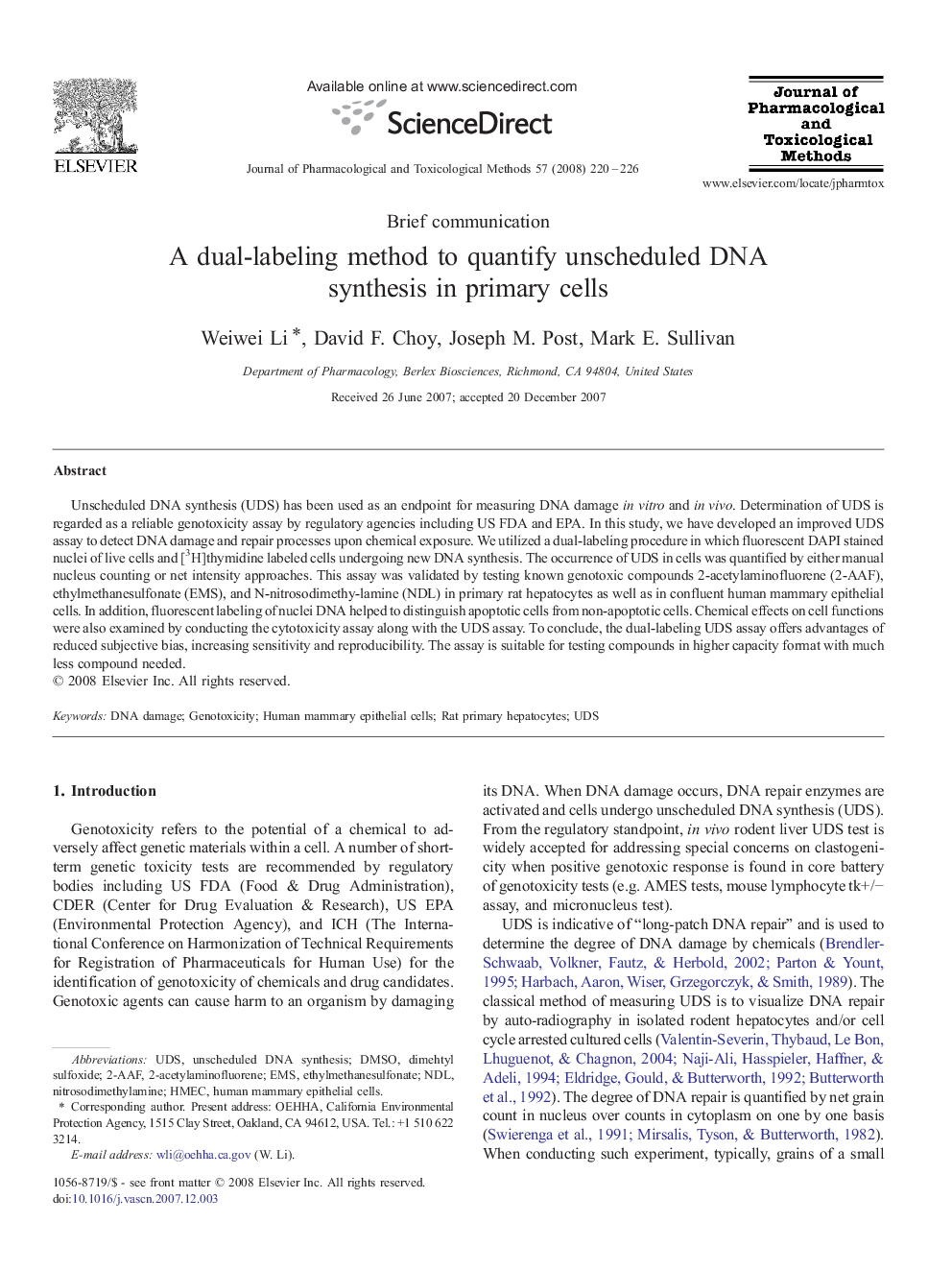| Article ID | Journal | Published Year | Pages | File Type |
|---|---|---|---|---|
| 2550332 | Journal of Pharmacological and Toxicological Methods | 2008 | 7 Pages |
Unscheduled DNA synthesis (UDS) has been used as an endpoint for measuring DNA damage in vitro and in vivo. Determination of UDS is regarded as a reliable genotoxicity assay by regulatory agencies including US FDA and EPA. In this study, we have developed an improved UDS assay to detect DNA damage and repair processes upon chemical exposure. We utilized a dual-labeling procedure in which fluorescent DAPI stained nuclei of live cells and [3H]thymidine labeled cells undergoing new DNA synthesis. The occurrence of UDS in cells was quantified by either manual nucleus counting or net intensity approaches. This assay was validated by testing known genotoxic compounds 2-acetylaminofluorene (2-AAF), ethylmethanesulfonate (EMS), and N-nitrosodimethy-lamine (NDL) in primary rat hepatocytes as well as in confluent human mammary epithelial cells. In addition, fluorescent labeling of nuclei DNA helped to distinguish apoptotic cells from non-apoptotic cells. Chemical effects on cell functions were also examined by conducting the cytotoxicity assay along with the UDS assay. To conclude, the dual-labeling UDS assay offers advantages of reduced subjective bias, increasing sensitivity and reproducibility. The assay is suitable for testing compounds in higher capacity format with much less compound needed.
